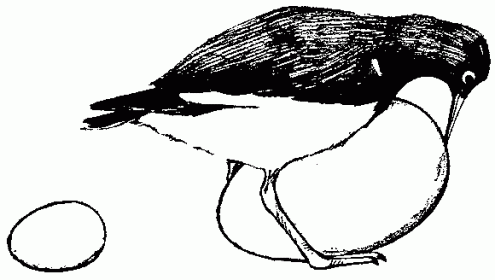Oliver, the Humanzee

In 1960, in the African nation of Zaire (now the Democratic Republic of Congo), a peculiar discovery was made. It was a young male chimpanzee with a strikingly humanoid face and the propensity for bipedal locomotion (a trait previously unobserved amongst chimpanzees). This bizarre animal found its way into the care of American animal trainers Frank and Janet Berger who dubbed their new pet Oliver.

Oliver exhibiting his characteristic upright stance. He was rarely seen walking on his knuckles.
Oliver showed a strong desire to adapt as many human affects as possible, including smoking cigars, shunning the company of other chimpanzees, and even making sexual overtures toward Janet. When put on display in the public eye, Oliver became a media sensation, and was widely believed to be some sort of missing link or human-chimpanzee hybrid. Genetic testing did in fact reveal that Oliver possessed forty-eight chromosomes, one more than is common in chimpanzees, and one less than is common in humans. In lieu of any further discussion of Oliver, I have included below the complete documentary produced by the Discovery Channel in 2006 exploring this strange creature and his unique story.
The Pitfalls of Supernormal Stimuli
“…(supernormal stimulus) refers to a paradoxical effect whereby animals show greater responsiveness to stimuli that differ substantially from the “natural” stimulus.”
– J.E.R. Staddon, Behavioral Psychologist
I recently learned of the writings of Dutch ethologist Nikolaas Tinbergen (1907-1988), who performed some fascinating experiments on birds, specifically oystercatchers.

Shorebirds found all across the globe, oystercatchers possess a hard-wired trait that caught Tinbergen’s attention. After laying several eggs, female oystercatchers are faced with the choice of which egg to brood atop, and thus incubate the enclosed embryo until its hatching. Since larger eggs are more likely to produce healthy chicks, these birds are programmed to select their largest eggs for brooding. This tendency produces very odd results, however, when it is exposed to supernormal stimuli. In this case, Tinbergen placed the much larger eggs of a totally different species of bird along side the oystercatchers’ eggs. Surprisingly, the oystercatchers hopped right atop these absurdly large eggs, ignoring their own.

Here is former Food and Drug Administration Commissioner David A. Kessler’s explanation of this counterintuitive behavior:
“From the standpoint of evolution, a bird’s preference for a larger egg over a smaller one makes sense. Smaller eggs are more likely to be nonviable, so birds that consistently choose them would not have been likely to survive as a species. Their preference for a giant egg is a logical extension of a preference for the egg that seems most likely to be viable.”
The power of the supernormal stimulus of egg size to hijack the oystercatchers’ ingrained survival mechanisms is strong enough to cause these birds to cuckold themselves, expending precious time and energy to bring another bird’s child into the world. While this effect is curious when observed among birds, its results are more startling when applied to humans. An oft-cited example of this is the contentious issue of the portrayal and attractiveness of female bodies. For example, throughout history many women have had their bodies altered to make their breast bigger or appear to be bigger, whether through body-molding clothing or, more recently, surgery and photo editing.

Venus of Willendorf is a limestone carving of a woman’s body discovered in Lower Austria. It is believed to date from 24,000 BCE – 22,000 BCE. Her breasts are swollen to absurd proportions.
The Venus of Willendorf carving shows that the issue of male attraction to exaggerated, unnatural female forms is nothing new. University of Cambridge archaeologist Paul Mellars observes that, “…(Venus of Willendorf) could be seen as bordering on the pornographic.” This is an example of how male attraction to breasts, although having originally coevolved with actual female breasts, can be triggered by portrayals of exaggerated and unnatural breasts.
Another illustration of how supernormal stimuli can kidnap ingrained human desires and redirect them toward artificial ends can be found on the menu of any fast food restaurant.

This chart compares the calories and fat contained in hamburgers served at some leading fast food chains
When competing for survival, pre-agricultural humans benefited greatly from eating as much animal fat as they could get their hands on due to its rich caloric content. As a result, the human tongue and brain grew to find fat quite palatable. In modern society it is much easier to gain access to fatty foods, but the tongue and brain can still be motivated by a primal desire to eat as much fat as possible, as if stockpiling calories in the face of potential periods of famine. In their book Understanding Nutrition, nutritionists Elli Whitney and Sharon Randy Rolfes claim that a healthy adult should consume 45 to 75 grams of fat each day. Many of the hamburgers on the above chart, however, exceed this daily amount despite the fact that they are meant to comprise just one meal (foods containing wildly inflated amounts of fat, salt, sugar, and so on are dubbed “hyperpalatable” by food scientists).
The overwhelming popularity of these restaurants (McDonald’s having famously served “billions and billions”) demonstrates how a human drive that originally aided survival now leads many to consume significantly more fat than their bodies require, potentially to the detriment of their health. These chain restaurants, however, are not fully to blame for selling such hyperpalatable food. As W. Philip T. James of the International Obesity Task Force points out, “It is little wonder that food manufacturers, responding to taste panels and sales returns, have focused, particularly in the last two decades, on providing this evolutionarily rare but highly prized sensory mix as a routine in an increasingly varied number of foods made for convenient consumption.”
There are many more examples of supernormal stimuli leading people to self-destructive behavior, ranging from drug addiction (certain drugs, such as cocaine, stimulate a massive release of dopamine in the brain, whereas dopamine is released in much smaller quantities under natural circumstances) to video game enthusiasts literally starving to death after playing World of Warcraft for days on end without interruption. The conclusion to be drawn is that, in order to enjoy the spoils of modern life healthfully in the face of ubiquitous supernormal stimuli, a certain resistance to one’s own chemical drives is neccessary. This is no easy task, however, since the brain is literally built to perceive the satisfaction of these desires as necessary for survival.
Some Further Reading:
A very interesting article about how supernormal stimulus is used in product marketing